
The history of the American colonies is thick with names from New England, including many places people can visit now: battle sites, graveyards, and homes of writers, thinkers, and heroes. In Plymouth, MA, you can see Plymouth Rock and tour a replica of the Mayflower. Boston’s Freedom Trail -- an urban walking trail -- touches churches & meeting houses where the American Revolution was ignited. Newport, RI, looks much like it did as a trading center in the 1700s. Every New England state has sites from the era before the United States came to be.
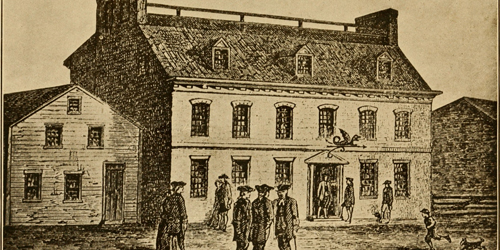
Greater Boston & Cambridge Area:
This 2.5-mile walking trail through Boston, MA leads to 16 historic sites where the American Revolution was fought or hatched in the colonies. Kids are enthralled by the stories & the costumed guides. The Trail begins at Boston Common, a bright urban park, and a brick path guides walkers the entire way. Sites on the Trail include the Park Street Church, Granary Burying Ground, King's Chapel, Old Corner Book Store, The Old State House, Faneuil Hall, Paul Revere House, The Old North Church, USS Constitution, and Bunker Hill Monument. See our Greater Boston Tour Map on VisitWidget!
See our Greater Boston Tour Map on VisitWidget!
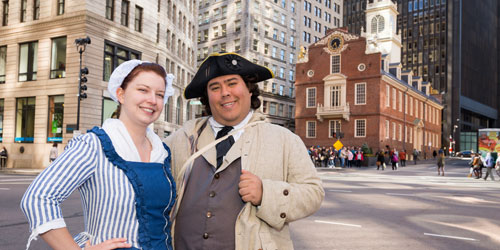
The first view of the USS Constitution, docked at the Charlestown Navy Yard in Boston, MA, is truly a thrill. At the USS Constitution Museum, only a few steps from the ship, galleries take visitors on a 200-year voyage into the heart of the New England colonies. See how sailors climbed masts 200 feet in the air & learn how the ship earned its nickname. During summer, the Constitution takes short cruises in Boston Harbor.
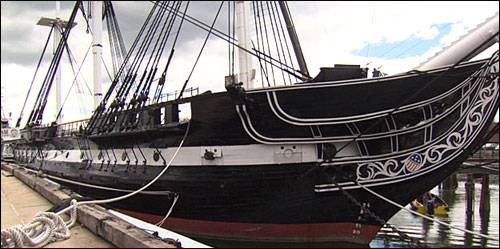
Often referred to as "the Cradle of Liberty," Faneuil Hall hosted America's first Town Meeting, where the Sons of Liberty proclaimed their dissent against royal oppression. This imposing building is open daily, hosting historical talks every 30 minutes. Next door is Quincy Market, an indoor-outdoor mall with dozens of gift shops, wonderful food stalls and restaurants, and a front seat to free street music and street theater.
The African Meeting House and Abiel Smith School on Beacon Hill, located in the old heart of Boston, MA's African American community, remain a showcase of black community life & history. Once a church, a school, and a meeting hall, the African Meeting House is open to the public. The Abiel Smith School, the nation's first public school for African American children, houses a first-class exhibit space and the museum store.
The workings of the early (1600-1800) whaling industry is on display at the Nantucket Whaling Museum on Broad Street. Nantucket, MA became a part of the Bay Colony of Massachusetts in 1692 and very soon Nantucketers began to organize whaling expeditions in small boats to pursue the right whales that passed nearby on annual migrations. Deep-sea whaling began around 1715. It built towns and sea captains’ fortune, and inspired classics like Melville's Moby Dick. Open seasonally.
The Salem witch hunts and witch trials of 1692 lasted less than a year, but the terrifying phenomenon of group panic has a lasting hold on our imaginations. At the Salem Witch Museum, visitors are given a dramatic history lesson using stage sets with life-size figures, lighting and a narration. On the lighter side, Salem, MA is fun to visit in October, when dozens of light-hearted, Halloween-themed entertainments.
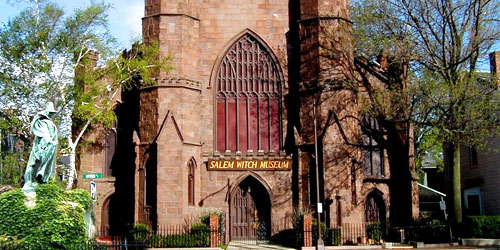
On April 19, 1775, the American Revolution began at Lexington & Concord, MA with a clash of arms known as "the shot heard round the world." At Minute Man National Historical Park, visitors re-live the opening battle of the American Revolution at the battlefields and through exhibits. The park is 22 miles from Boston within the towns of Lexington, Lincoln, & Concord, MA. Plan a visit for Patriot's Day, in mid-April. The day includes a fantastic reenactment at the Lexington Green, parades of Minute Men and Redcoats, and demonstrations at North Bridge and Battle Road.
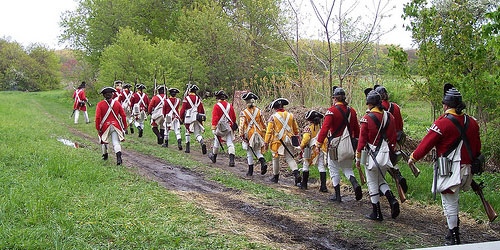
Concord, MA was home of the most original thinkers and writers of the American literary Renaissance. The Concord Museum is the one place where all of Concord, MA's past is brought to life through a historical collection including the famed Revere Lantern, literary treasures such as Emerson's study and Thoreau's desk, Concord-made clocks, silver & furniture, all in self-touring galleries with hands-on activities for kids.
Plimoth Patuxet, a living history community & museum, describes the native Wampanoag and Colonial English peoples of 17th-century Plymouth, MA. Known in colonial times as Plimoth Plantation, its four major exhibits are the Wampanoag home site, the 1627 English Village, and the Crafts Center, and the Mayflower II, a reproduction of the original Mayflower. The Wampanoag home site explores the story of one 17th-century Native American and his culture. The 1627 English Village is a re-creation of the town built by English colonists. At the Crafts Center, artisans reproduce household and farm objects of the time.
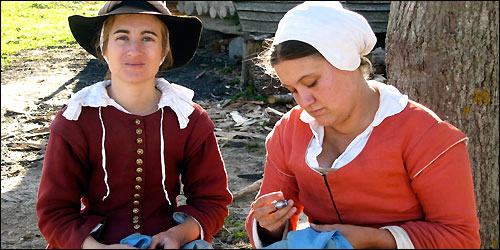
John Alden and Priscilla Mullins Alden, travelers aboard the Mayflower, settled and raised their 10 children in the town of Duxbury. Their home still exists at the Alden Historic Site. Priscilla Mullins Alden is arguably the best known Pilgrim woman because of the poem “The Courtship of Miles Standish,” written by their descendant, Henry Wadsworth Longfellow. The poem’s memorable phrase, "Speak for yourself, John," placed the Aldens solidly into American lore.
The park and national monument has several sites: the birthplaces of presidents John Adams and John Quincy Adams; Peacefield, including the home to four generations of the Adams family from 1720 to 1927 ; and the Stone Library, which contains more than 14,000 volumes. This family of accomplished Americans comes to life through these exhibits.
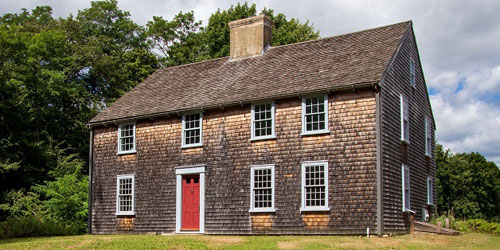
Greater Hartford & Central Conn.:
Founded in 1634, Wethersfield is Connecticut’s "Most Auncient Towne". Its public spaces preserve houses, churches, and businesses used since the 17th century. Most of these places are beautiful, and they tell stories of the area and its people, back through the times of Native Americans, The Wethersfield Heritage Walk is a three-mile guided by exhibit kiosks and wayside panels through Main Street The Cove, and Broad Street Green. Interpretive markers tell stories of Native American Wangunks, settlers, farmers, ship builders, sea captains, slaves, soldiers, seed merchants, patriots, diplomats, and prisoners.
Interesting spots in the area include the Ancient Burying Ground, with a stone dating to 1648 and lots of stonework by a stone carvers. First Church graces the center of the village. The town has many historic homes, such as the Webb Deane Stevens Museums; a museum and an art academy, and a nature center. Notable public gardens include the Webb House Colonial Revival Garden, the Heritage Herb Garden, and the Weston Rose Garden. If you love shopping and dining, there is much to choose from. The Shopkeepers Guide is a useful companion.
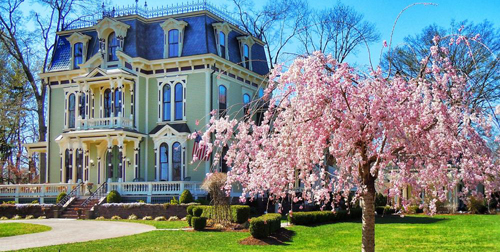
Stonington Borough, a tiny seaside village within the Town of Stonington, extends along a narrow peninsula into Fisher’s Island Sound. Colonial-period houses and traditional churches are packed tightly together, and many buildings on the main street house fine little antiques and jewelry shops. Restaurants are small and friendly, and they include a famous seafood restaurant overhanging the harbor, with lots of boat traffic to watch. In season, window boxes overflow with flowers and decorative flags flap everywhere.
The Borough has a yacht club, boatyard, and two commercial marinas. The Borough has the last remaining commercial fleet in Connecticut, harvesting its well-known "Bomster" scallops and flounder. The town’s Portuguese fishing traditions are on display at the Blessing of the Fleet festival each summer at the Town Dock. Fine historic sites are the Old Lighthouse Museum at the very end of the peninsula, and the home of Capt. Nathaniel B. Palmer, who discoverer Antarctica in the winter of 1820-1821. Both are open to the public (seasonal hours).
"I only regret that I have but one life to lose for my country," declared Captain Nathan Hale moments before the British hanged him as a spy in 1776. Hale, a school teacher, was commissioned a first lieutenant in the Continental Army in 1775. A year later he volunteered to go behind British lines on Long Island to gather military intelligence needed by General George Washington. But the British captured Hale and executed him. He was 21. Hale was born and spent most of his life on this 400-acre farm, the Nathan Hale Homestead. Its furnishings include several Hale family possessions. Open seasonally.
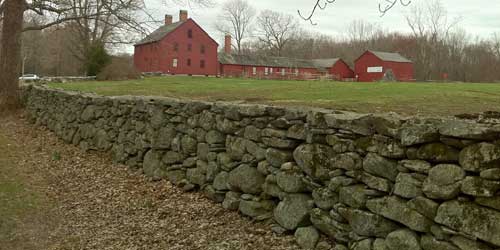
The high-tech Mashantucket Pequot Museum & Research Center, the world's largest Native American museum, offers experiences for young and old, from life-size dioramas that transport visitors into the past to changing exhibits and live performances of contemporary arts. Four acres of permanent exhibits depict 18,000 years of Native and natural history, while two libraries offer materials on the histories and cultures of all Native peoples of the continent. Open year-round.
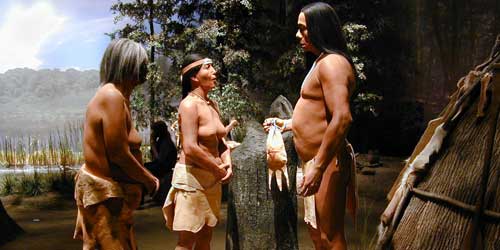
The "Ye Antientest" Burying Ground in New London could be an art museum from standpoint of the craftsmanship of early gravestone carvers. Each headstone is a work of art; experts can identify individual carvers. In his book on the topic, James Slater wrote, "of all Connecticut's burying grounds, this may contain the greatest variety of different carving schools. New London was an ancient port and reasonably wealthy. Stones were certainly shipped by sea from Newport and the Boston area and down the Connecticut and Thames rivers."
Built in 1833, the Custom House remains the oldest operating custom house in the nation. Robert Mills, America's first federal architect, who also executed the Washington Monument, the United States Treasury Building, and other significant government structures, designed the building. A classic Greek Revival granite building, the front doors are made from wood from the USS Constitution. In 1839, U.S. Customs played an important role in the early steps to freedom of Africans brought to New London with the slave ship Amistad. Open April through December, daily, 1-5 p.m. except Mondays; January through March, by appointment.
This world-class university of the American Ivy Leagues began as a proposal the 1640s by clergymen seeking to propagate in the New World an institution of advanced liberal learning, A charter was granted in 1701 and the renamed “Yale College” went on to survive the American Revolution. Today, any visitors can enjoy the university’s history, art, and magnificent architecture through a number of campus tours. Highlights are the art museums and the Beinecke Rare Book and Manuscript Library, home of the Gutenberg Bible.

This burying ground, with gravestones dated from 1687 to 1812, is a true crypt, containing historic figures as well as many unnamed souls. Center Church was built in 1812-1814 over part of an early Colonial cemetery, thereby entombing and protecting the burying ground. The crypt contains the remains of 137 identified people, but hundreds more are believed to lie here. Headstones are elaborate and artistic, displaying funerary art of the 17th to 19th centuries and serving as a record for local historians. The oldest dated stone is for Sarah Rutherford Trowbridge, who died 1687. Slightly later, Sarah Whiting (1669-1726) was described on her headstone as the "faithful, virtuous and weary … painful mother of eight children."
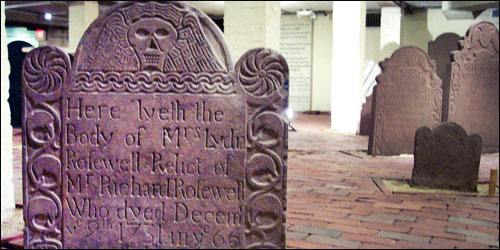
Education and preservation of the American Indian cultures is the mission of the Institute for American Indian Studies in Washington. Visitors are treated to Native artifacts and art, an indoor longhouse, a simulated archaeological site, trails, a replica of a 17th-century Algonkian village, and a fine gift shop. The institute's primary exhibit, As We Tell Our Stories, is divided into seven sections about Native culture: land, exchange, clay, corn living spaces, deer, manitou, and ways of war.
Touro Synagogue, founded in 1763 in Newport, is the first synagogue in America, with the second-oldest Jewish congregation in the United States. The Georgian-influenced building is situated on an angle within the property allowing worshipers standing in prayer before the Holy Ark to face east toward Jerusalem. The synagogue chamber contains 12 Ionic columns representing the tribes of ancient Israel and each made from a single tree. Five massive brass candelabra hang from the ceiling. Tours are offered; call ahead for information.

Newport is dense with artifacts of the Colonial period, and much of it is out in plain sight today, in the narrow streets, clapboard houses, and historic churches and wharves. At the Museum of Newport History, visitors can see James Franklin’s printing press, the figurehead from the yacht Aloha, Colonial silver, objects of daily life and more. The town’s history, beginning in the 1600s, runs the gamut from slavers, shipping magnates, and pirates to yachtsmen and Gilded Age plutocrats. The museum's operator, the Newport Historical Society, also offers lots of interesting walking tours of the town, year-round. Museum open year-round; call ahead for hours.
The beautiful and historic Trinity Church, located in Queen Anne Square, is the oldest Episcopal parish in Rhode Island. The building was completed in 1726, its design based on London churches design by Sir Christopher Wren in the 17th century. George Washington worshiped there, and the organ was tested by George Frederick Handel before being sent from England. The church contains Tiffany stained-glass windows and the only three-tiered, wine glass pulpit in America. The building was enlarged in 1764, but otherwise retains its original character with box pews.
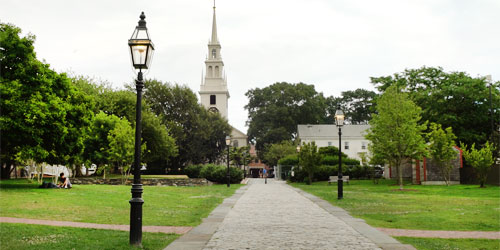
Built in 1697 and now the oldest house in Newport, the Wanton-Lyman-Hazard House was owned by a succession of community leaders, including Martin Howard Jr., a prominent Loyalist during the American Revolution, who was hanged in effigy on in 1765 for his Tory sentiments. The house expanded over generations from its original single room on each side of a central chimney and garret on top. The house reflected the tastes and aspirations of a thriving seaport town. Each change to the building is based upon the tastes of the owner and his family, Quaker themes, and the architectural influences of a commercial and cosmopolitan center.
The African slave trade and Newport share common origins. Newport, one of the most prosperous of Colonial American ports, saw unprecedented growth throughout the 18th century from the export and trade of rum, spermaceti candles, and slaves. By the beginning of the American Revolution, Newport had a large Free African community. Today, Newport is home to a historically significant burial ground that the African American community commonly called God's Little Acre. This burial area on Farewell Street has some of the oldest markers of free Africans and slaves dating back to the late 1600s.
The Great Friends Meeting House, built in 1699, was where Quakers from throughout New England gathered to pray and discuss the issues of the day, including war, slavery, and women's rights. This is the oldest surviving house of worship in Newport. Quakers dominated the political, social, and economic life of the town into the 18th century, and their plain style of living was reflected in Newport's architecture, decorative arts and early landscape.
The Newport Colony House, dating from 1739, was a government meeting place and the site of celebrations, the Stamp Act riot, reading of the Declaration of Independence, and more. Many important events associated with the shaping of the United States occurred at the Colony House. In 1761, the death of George II and the ascension of George III were announced from the balcony. In 1766, citizens of Newport celebrated the repeal of the Stamp Act in the Colony House. On July 20, 1776, Major John Handy read the Declaration of Independence from the front steps. During the British occupation of Newport from 1776 to 1779, the Colony House was used as a barracks.
Here is a walking tour that is beneficial to both the mind and the senses. A walk along Benefit Street, carved high into a ridge along Providence's East Side overlooking downtown, is a memorable stroll among immaculately preserved Colonial, Federal, Greek Revival, and Victorian-style houses. The Providence Preservation Society distributes maps with self-guided walking tours and the Rhode Island Historical Society conducts walks in the summer.
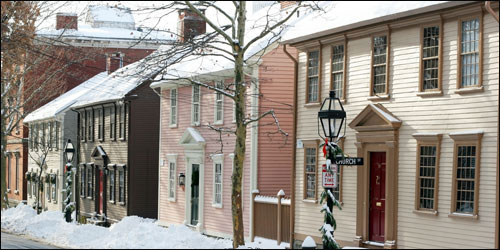
The First Baptist Church in America was founded in 1638 in Providence by William Vincent Carpenter and Roger Williams, who had established Rhode Island's first permanent settlement at Providence in 1636. The present church building, also called the Meeting House, was built in 1774-1775. The architecture is a blend of English Georgian and the traditional New England meetinghouse. The Georgian aspects include the exterior portico and steeple, the Palladian window behind the pulpit, the fluted Tuscan columns, the groined arches in the balcony, and the split pediments over the doors. Guided tours are available Memorial Day through Labor Day, weekdays, 10 a.m.-4 p.m.; self-guided tours may be done all year. There is also a guided tour each Sunday after the worship service. Tour booklets are available in several languages. There is a small gift shop with postcards, note cards, and books.
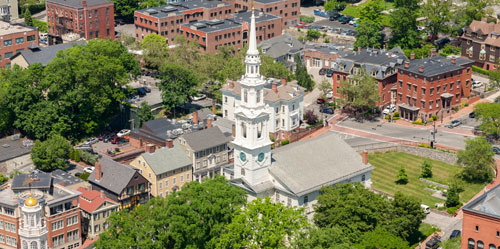
Spread across many acres of property on College Hill, part of the East Side overlooking downtown Providence, Brown University is a pleasure to visit. Travelers enjoy strolling the streets and gazing at the elegant Colonial, Federalist, and Victorian buildings of the neighborhood. The epicenter of the university is College Green, but its buildings then spread out through a neighborhood of elegant mansions. The neighborhood has lots of green spaces to sit and enjoy the passing academic world. The restaurants and shops of Thayer Street, which passes through the campus, offer lots of variety in ethnic foods, casual foods, and youthful shopping. The neighbor has an old-time, arty movie theater with a small foyer and a single screen. The university publishes a helpful map and guide for a tour of the campus.
Visitors to Strawbery Banke experience and imagine how people lived and worked in this typical American neighborhood from the late l7th to the mid-20th century, through restored houses, featured exhibits, historic landscapes and gardens, and interpretive programs. In 1630, Englishmen sailing up the Piscataqua River were impressed by the thick growth of wild berries along the west bank, chose that spot for settlement and named it Strawbery Banke. The site became an important colonial commercial center & Portsmouth became a trading town and the leading port north of Boston. Today, this living history museum hosts events year 'round, like hearthside dinners, historical crafts and traditions; and a wonderful Candlelight Stroll at Christmas.
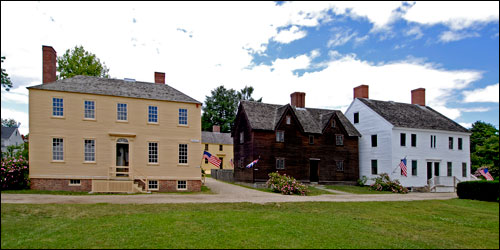
The Portsmouth Historical Society cares for a diverse collection of furniture, paintings, ceramics, costumes, and maritime artifacts at the John Paul Jones House on Middle Street, which was built in 1758 for a sea captain and merchant. (John Paul Jones, the naval hero of the American Revolution, spent time in Portsmouth in 1777 and 1781-82. He is believed to have rented a room in this house during 1777). Portsmouth was well known as a center for the furniture trade in the 18th and 19th centuries and the society displays some exceptional examples of Portsmouth craftsmanship. The collection also includes portraits, glass ceramics, China trade wares, textiles, clothing, needlework and kitchenware.
Native Americans were living in the Champlain Valley 11,000 years before the arrival of Europeans; the Champlain Valley has played an important role in North American history because it is a water corridor from the St. Lawrence Valley and the heart of the North American continent. The lake has served as a highway for of communication, commerce, technology, and war. Lake Champlain Maritime Museum brings history to life through exhibits of historic boats (schooners, steamboats, and wooden boats) and shipwrecks; stories of exploration and the many peoples who have lived here; and studies of the natural history of the lake, above and below the surface, Theirs is a full-scale working Revolutionary War gunboat replica and much more.
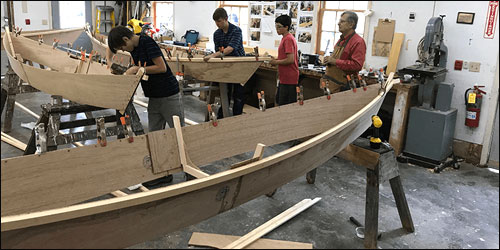
Only a short drive from downtown Burlington, the Ethan Allen Homestead Museum offers hands-on history, spectacular scenery, and riverside picnic areas and walks. The Homestead provides a genuine slice of 18th century life, and an intimate look at Vermont's most colorful founder. Ethan Allen, who has become a folk hero in Vermont, was an unusually flamboyant backwoodsman-turned-statesman from Connecticut and one of the early inhabitants of Burlington. He is best known for the capture of Fort Ticonderoga at the outbreak of the Revolutionary War and his leadership of the Green Mountain Boys. The museum and house are open on a limited basis during the warm months, but the grounds are always open from sunrise to sunset.
Built in the late 1880s, this monument is a dedication to the famous Battle of Bennington that took place during the Revolutionary war in 1777. Here the American Colonists maintained a store of weapons and food, which British General Burgoyne needed to restock his troops. The monument is a 306-foot-tall stone obelisk north of VT Rte 9, about 4 miles east of the New York border. An elevator takes visitors to the observation floor for spectacular views of Bennington and three states. A diorama and several interpretive exhibits are on the ground floor. A gift shop specializes in historical items relating to the Battle of Bennington and Vermont.
Museums of Old York is nine historic buildings, including a Colonial tavern, an old jail, an estate filled with antiques, and a warehouse that once belonged to patriot John Hancock. Also on the site are a nature preserve, museum shop, contemporary art gallery, and restored gardens. Visitors experience more than 300 years of New England heritage and hear tales of sea captains and their families, jailers, prisoners, and others. Also on display are beautiful decorative objects and antiques, including the only complete set of 18th-century American crewelwork bed curtains known to exist. Museum buildings include the John Hancock Warehouse, Jefferds' Tavern, the Old Gaol, the Old Schoolhouse, the George Marshall Store, and others.Open June to Columbus Day, daily except Sundays. The museums host many seasonal and special events that bring history to life for adults and kids.
The Abbe Museum opened in 1928 as a trailside museum at Sieur de Monts Spring. Its mission is to interpret the history and lives of the Wabanaki Indian tribe through exhibitions, events, archaeology field schools, and craft workshops. By the 1990s the Abbe's museum at Sieur de Monts Spring had become inadequate to house the growing collections, changing exhibitions, and research. In September, 2001, the museum moved in a new, larger space in downtown Bar Harbor. Among the permanent exhibitions is Wabanaki: People of the Dawn.
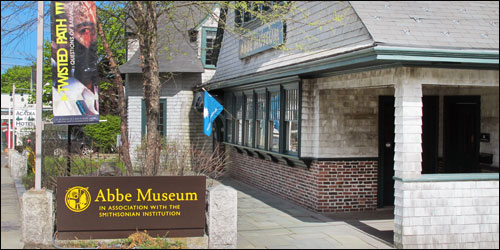
For special offers and great New England travel tips subscribe today.